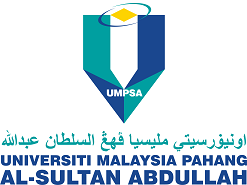PEMBANGUNAN GARIS PANDUAN PEMULIHARAAN MASJID LAMA NEGERI PAHANG
Development of Conservation Guidelines for Old Mosques in the State of Pahang
DOI:
https://doi.org/10.15282/ijhtc.v6i(S1).6235Keywords:
Mosque Old mosque, Heritage mosque, Islamic heritage, Islamic civilizationAbstract
Mosques have become proof of the spread of Islam in a place including in the state of Pahang. The construction of new mosques has caused some of the old mosque buildings to no longer be used and to change functions. However, some of them have an important connection with the history and Islamic civilization in the state of Pahang. This happens because of the absence of proper and perfect management and supervision. Therefore, this study was conducted to reflect the concern for the valuable heritage in the state of Pahang. In particular, it aims to detect and identify the existence of old mosques in the state of Pahang, study the current methods of their conservation and develop a guideline for the conservation of heritage mosques in the state of Pahang. The methodology of this study is conducted through field observation, interviews, document review and data obtained through qualitative methods. As a result, the study has shown that the state of Pahang has old mosques that have the potential to be used as heritage mosques. The maintenance of the existence of these mosques is through the method of restoration, exchange of functions, monitoring and relocation. It should be restored by creating an inventory of old mosques in the state of Pahang, gazetting the land where they are located, opening applications for the reuse of the buildings, providing financial allocations for repairs and maintenance and gazetting it as a Pahang State Heritage Mosque. It is hoped that this study will be able to suggest some old mosques that have the potential to be restored and subsequently become famous as Pahang State's Heritage Mosques.
Masjid telah menjadi bukti penyebaran agama Islam di sesebuah tempat termasuklah di negeri Pahang. Pembinaan masjid-masjid baru telah menyebabkan sebahagian bangunan masjid lama tidak digunakan lagi dan bertukar fungsi. Namun, sebahagiannya mempunyai kaitan yang penting dengan sejarah dan tamadun Islam di negeri Pahang. Ini berlaku kerana ketiadaan pengurusan dan pengawasan yang teratur dan sempurna. Justeru, kajian ini dijalankan bagi mencerminkan keperihatinan terhadap warisan berharga di negeri Pahang. Secara khususnya, ianya bertujuan untuk mengesan dan mengenalpasti kewujudan masjid-masjid lama di negeri Pahang, mengkaji kaedah semasa pemuliharaannya dan membangunkan satu garis panduan pemuliharaan masjid warisan negeri Pahang. Metodologi kajian ini dilakukan secara pemerhatian lapangan, temubual, kajian dokumen dan data yang diperoleh pula melalui kaedah kualitatif. Hasilnya, kajian telah menunjukkan bahawa negeri Pahang memiliki masjid-masjid lama yang berpotensi untuk dijadikan sebagai masjid warisan. Pengekalan kewujudan masjid-masjid tersebut adalah melalui kaedah restrorasi, pertukaran fungsi, pemantauan dan perpindahan. Ianya wajar dipulihara dengan mewujudkan inventori masjid-masjid lama negeri Pahang, mewartakan tanah tapaknya, membuka permohonan penggunaan semula bangunannya, menyediakan peruntukan kewangan bagi kerja-kerja baik pulih dan penyelenggaraannya dan mewartakannya sebagai Masjid Warisan negeri Pahang. Kajian ini diharap dapat mencadangkan beberapa buah masjid lama yang berpotensi untuk dipulihara dan seterusnya dapat dimasyhurkan sebagai Masjid Warisan negeri Pahang
Downloads
Published
Versions
- 2021-03-08 (3)
- 2021-03-08 (2)
- 2021-03-08 (1)
Issue
Section
License
Copyright (c) 2021 Universiti Malaysia Pahang Publishing

This work is licensed under a Creative Commons Attribution-NonCommercial 4.0 International License.




